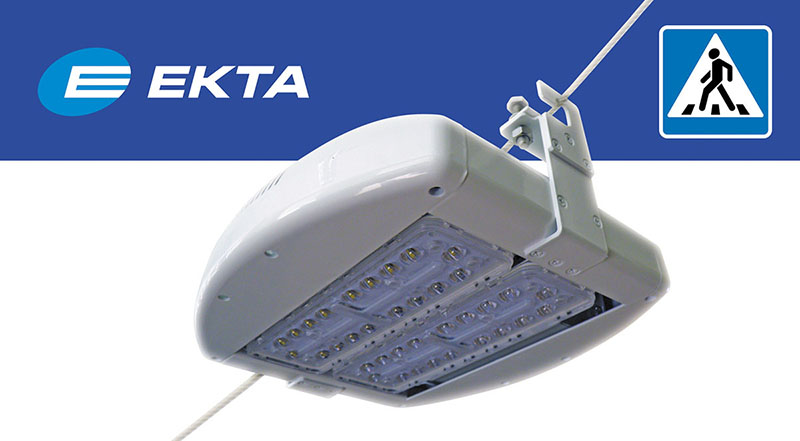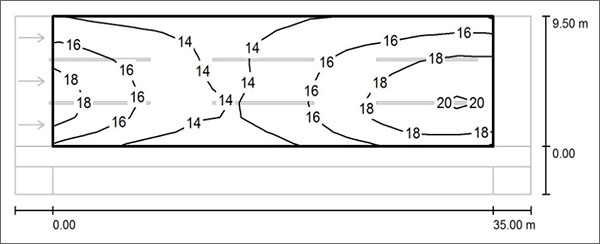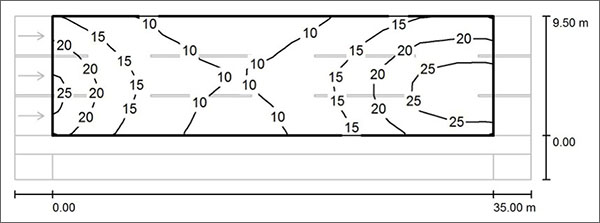
In September 2016 Conference LED Progress, devoted to the top current LED market trends, was held in Kyiv. At a meeting of experts, the most important aspects of lighting production were raised. EKTA Company put emphasis on the importance of the integrated approach to ensure a standard quality of utilitarian outdoor LED lighting in the absence of well-targeted tendering procedure.
Project-based approach – a tool to ensure the quality of street lighting
Today, provision of lighting quality - is first and foremost the safety of people and vehicles’ movement on the roads. Experience in the implementation of the various projects on streets and highways’ lightening allows us to state with certainty that the issue of quality lighting provision cannot be solved by simple replacing of outdated, inefficient luminaires with new ones.
Renewal of lighting in populated localities must not be executed without prior design. LED luminaires, used in the lighting systems, are to comply with the operating standards, the regulatory framework for the lighting of roads and streets as well as with ambient climatic conditions.
Also, the project planning, executed at the stage of the purchase decision, can reduce costs for energy consumption significantly. The choice of luminaires should not be based solely on the rated input excluding lighting characteristics. Below is an example of the projects with the correct (Fig. 1), and the wrong choice of the luminaires (Fig. 2).


Luminaires in Figures 1 and 2 provide the same average illumination. Nevertheless, due to the wrong selection of the lamp, the luminaire on figure 2 consumes more power. Through the given example, it can be concluded that the correct selection of the lamp reduces the consumed power of the whole lighting device from 125 to 100 W (95.8 kW per year).
How much do you lose by choosing a cheaper product?
An equally important aspect is to consider the total cost of ownership (TCO) of lighting project at the stage of the purchase decision. The TCO of lighting device includes the cost of the lamp, the cost of electricity, consumed during the life cycle, the cost of its maintenance and disposal. Thus, the lower cost of the product does not guarantee lower TCO. The more expensive products may take in the function of the night brightness reduction (Fig. 3), thanks to which power consumption can be decreased in several times.

The red line on the chart shows the brightness of an ordinary lamp. Blue line represents the operation of the luminaire with the function of program brightness reduction. Thus, the graph clearly depicts the possibility of lessening the lamp power consumption during the night, when the traffic flow rate decreases. Cost reduction for one lamp with power 100 W is up to 100 kW per year. In the long run, these factors allow reducing the TCO by far.
The current situation with the purchase of luminaries through tender procedures
Analysis of a number of tenders has shown that many requirements of the competitive bidding documentation do not meet the lightening quality standards, since the requirements for the geometric design of roads, the position of illumination poles and the parameters of the road lightening quality are not included in the competitive bidding documentation.
At the same time, there are specific requirements to the standards, which do not apply to the street lighting, such as the product compliance with energy labeling requirement, approved by the Resolution of the Cabinet of Ministers of Ukraine d.d. 27.05.2015.
Another significant problem is the lack of regulations on the Building Code level, which determine the procedure and peculiarities of LED street luminaires’ application. Thus, the use of the same single safety factor for LED luminairies and HCS lamps is incorrect in view of the significantly different processes of light sources degradation; however, it is impossible to use other values of the safety factor in the design of LED equipment, because these standards are not available in the Building Code of Ukraine.
Suggested approach
Taking into account the discussions at LED Progress and further consideration of the mentioned issues, we consider it important to focus on the following:
- Conduct tenders under the principle of projects-based approach (lamp as a technical device should not be considered as the subject of an auction);
- Form the technical input of the documents, submitted for bids, basing on the Building code requirements to the illumination quality of the street/road of a given geometry;
- Introduce obligatory provision of calculations for tender, submitted in a single reporting form and executed by a unified software;
- Develop Policy Statement, regulating the formation of tender documentation in the context of its technical input and create Expert Coordination Center, authorized to develop guidelines and to assist in the evaluation of street lighting projects for compliance with regulatory requirements.
Structure reformation will require a certain time, so at this stage we urge to treat the problem of illumination quality as an integrated project, to be more demanding of the quality of products and solutions, to consider the TCO of the lighting system and to trust companies that have experience in implementing complex projects.
